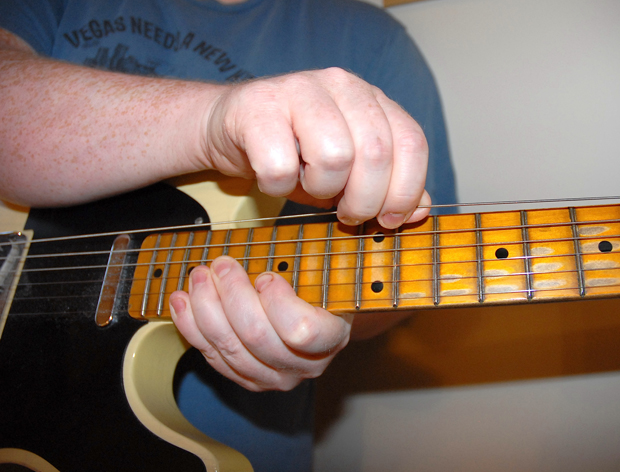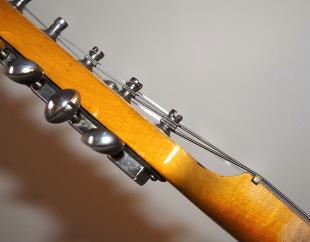String stretching: how to keep new guitar strings in tune from the start
Stretch your strings when you change them to stabilize your tuning

According to the vast majority of reader e-mails I've received, your biggest frustration is poor tuning stability. There are various reasons that your guitar might not be holding its tuning. It helps if your strings are neatly wound on their machine head posts (See the closeup photo below). It’s also important that new guitar strings are properly stretched to allow them to settle.
Like many things in life, I learned the importance of stretching strings the hard way. A few years ago, a friend who played guitar in a wedding band asked me to fill in for him when he went on vacation. The money was good; I already had a bunch of the tunes nailed. I took the gig.
Fast forward a week and I arrive at the venue, a hotel in the small Scottish town of Grangemouth. I unload my gear only to discover that I only had a few minutes to set up my gear. Oh, and there’s no sound check. Awesome.

I had restrung my guitars, a Fender “Will Ray” Jazz-A-Caster and Guild S-100 Polara, that morning and hadn’t played them in yet. I tuned my guitars, put my green Fender Prosonic amp on standby, then went off to get suited up.
Show time! The bride and groom had chosen Celine Dion’s cheesefest “My Heart Will Go On” as their first dance. A song based around a doomed ship sounds like a good omen for a long and happy marriage. Anyway, I was told to play the song’s flute intro on guitar. I was tuning up when the band struck up, taking me surprise. I had no choice but to play.
My guitar was badly out of tune. I mean, it wasn’t even in the same ZIP code. The bassist/bandleader looked round at me and mouthed the unabridged version of “WTF!” Luckily, the audience didn’t seem to notice as a fight broke out at the back of the room. You can always count on some kind of disturbance at a Scottish wedding, although it’s usually at the end. I got lucky, but I wouldn’t have made such a Titanic mistake if I’d stretched my strings in the first place.
To stretch your strings, hold your guitar in the playing position: You don’t want snapped strings hitting you in the face, natch. Make sure there are no other soft targets around you like, you know, people and animals. Beginning with the low E, pull the string about halfway along its length (See the top photo of me pulling one of my strings).
Get The Pick Newsletter
All the latest guitar news, interviews, lessons, reviews, deals and more, direct to your inbox!
Don’t go crazy; you’re not trying to win an archery contest here. Tune the string, then, like some Richard Simmons workout (Spandex optional), stretch and repeat until the tuning settles. Repeat the process with the other strings. You can use this process on acoustic guitars, just make sure the bridge pins are secure, and nylon strung classical guitars.
More questions answered next time. See you then!
Got a gear-related question for Ed? Add a comment below or on our Facebook page.
Ed Mitchell was Reviews Editor on Total Guitar magazine from 2003, and his guitar-modding column, Ed’s Shed, appeared in print on both sides of the Atlantic (in both Total Guitar and Guitar World magazines). He was the Editor of The Blues Magazine from 2012-16, and a contributor to Guitarist, Classic Rock and Louder. He died in October 2022, aged 52. Between them, the websites Guitar World, Louder and MusicRadar host over 400 of his articles – among them interviews with Billy Gibbons, Paul Weller, Brian Setzer, profiles on Roy Buchanan, Duane Allman and Peter Green, a joint interview with Jimmy Page and Jack White, and dozens of guitar reviews – and that’s just the ones that made it online.
“A distinctive brightness that no other strings have been able to capture”: How Rotosound revolutionized the bass world with its Swing Bass 66 strings – and shaped the sound of rock music in the process
“It’s almost impossible for our machinery to make a bad string”: Jim D’Addario on the history, innovations and future of the world’s biggest string manufacturer – and its biggest-selling string sets











